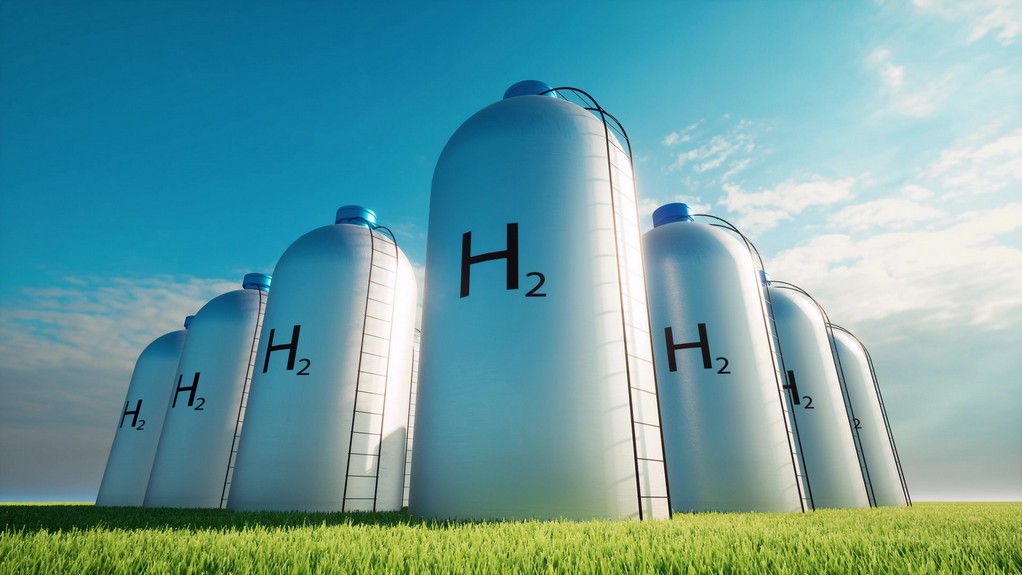A study published has reported a way to achieve a relatively high efficiency in an artificial photosynthesis reaction in which water is split into oxygen and hydrogen using sunlight and a catalyst. The technique is called photocatalysis.
Were this to work to plan, it could help lower the cost of green hydrogen. India’s Union Cabinet recently approved the National Green Hydrogen Mission with an allocation of nearly Rs 20,000 crore. Under the Mission, the government plans to make the gas cleaner, cheaper, increase its adoption as an alternative fuel in several sectors and, ultimately, export it.
Considering electricity is the biggest component of the cost of green hydrogen, the government effectively needs cheaper renewable energy – but the breakthrough could also come from cutting-edge technologies like photocatalysis.
The conventional way to produce green hydrogen is electrolysis, where water is split into its constituent elements by passing a large current through it. If both the electrolyser and the source of electricity are green, the resulting hydrogen is also green.
Currently, most of the hydrogen in India is produced by steam-reforming: methane is mixed with water in a reactor at 800-900º C and 20-30 atmospheres of pressure to yield hydrogen and carbon monoxide. The resulting hydrogen is thus ‘grey’.
When photons in sunlight strike the wafer, they dislodge electrons in its atoms, which trigger a redox reaction in the water and separate hydrogen and oxygen. The energy source is sunlight and the feedstock is water – both abundant on Earth and green by nature.
In the new study, Prof. Zetian & co. reporting achieving a reaction efficiency of 9.2% – the highest so far. Before this, “the highest efficiency for indoor (lab) studies was about 3%,” he said. In outdoor demonstrations it was “~1% or lower”.
Their effort included several innovations. They used an indium gallium nitride (InGaN) crystal as a photocatalyst. It is able to utilise visible light, which makes up 40% of the sunlight incident on Earth’s surface.
They wrapped the photocatalyst with ordinary A4 paper to insulate it after they found that its efficiency increased with temperature up to 80º C. Around half of sunlight is infrared radiation, which imparts heat, and the photocatalyst also utilises almost all the incident radiation.
The crystal was also most efficient at around 70º C. This temperature was favourable to hydrogen and oxygen being formed from water but unfavourable for the two atoms to recombine to form water. Beyond 70º C, the advantage dropped off.
There were also benefits related to the InGaN crystal, including its stability at high temperature and desirable electronic properties that convert more energy from sunlight to split water. The group was also able to synthesise the InGaN crystal together with rhodium, chromium oxide and cobalt oxide co-catalysts to precise specifications.
In a 10-hour test, the group recorded an efficiency of 7.4% with tap water and 6.6% with seawater, probably “the result of ions or other impurities present” in the liquids, according to the paper. The 9.2% record required deionised water. The STH efficiency was 3% in a 140-hour test.
Researchers in India, including from the IITs in Chennai, Kanpur and Jodhpur, BARC, and the Central Electrochemical Research Institute (Karaikudi) – among others – have also made strides in photocatalytic and photoelectrochemical (PEC) water-splitting.
The efficiency of PEC STH is higher but its components are less eco-friendly and less amenable to being scaled up, according to Prof. Zetian.
In an outdoor test, his team exposed a 4 cm x 4 cm wafer to sunlight concentrated through a window-sized lens. It achieved an efficiency of 6.2% and produced 0.095 litres/minute of hydrogen gas.
In a 10-hour test, the group recorded an efficiency of 7.4% with tap water and 6.6% with seawater, probably “the result of ions or other impurities present” in the liquids, according to the paper. The 9.2% record required deionised water. The STH efficiency was 3% in a 140-hour test.
Researchers in India, including from the IITs in Chennai, Kanpur and Jodhpur, BARC, and the Central Electrochemical Research Institute (Karaikudi) – among others – have also made strides in photocatalytic and photoelectrochemical (PEC) water-splitting.
Tags: Catalyst, Hydrogen, Photosythesis



Recent Posts
Babcock’s LGE Business Secures Contract for Marine Ammonia Fuel System to Advance Shipping Decarbonisation
Associated Terminals Deploys Liebherr’s All-Electric Cranes in Landmark Move Toward Cleaner Cargo Handling
Sanmar delivers fully electric emissions-free tug to major global operator Svitzer
Kolkata Dock deploys first-ever electric mobile cranes
ONGC orders two ethane carriers from Mitsui O.S.K. Lines
IndianOil to Commission India’s Largest Green Hydrogen Plant by 2027
IMI Greater Noida Signs MoU with IME (I) to Launch A New Student Chapter
GCMD Completes World’s First Pilot Demonstrating Full Carbon Value Chain from Ship-Captured CO2 in China